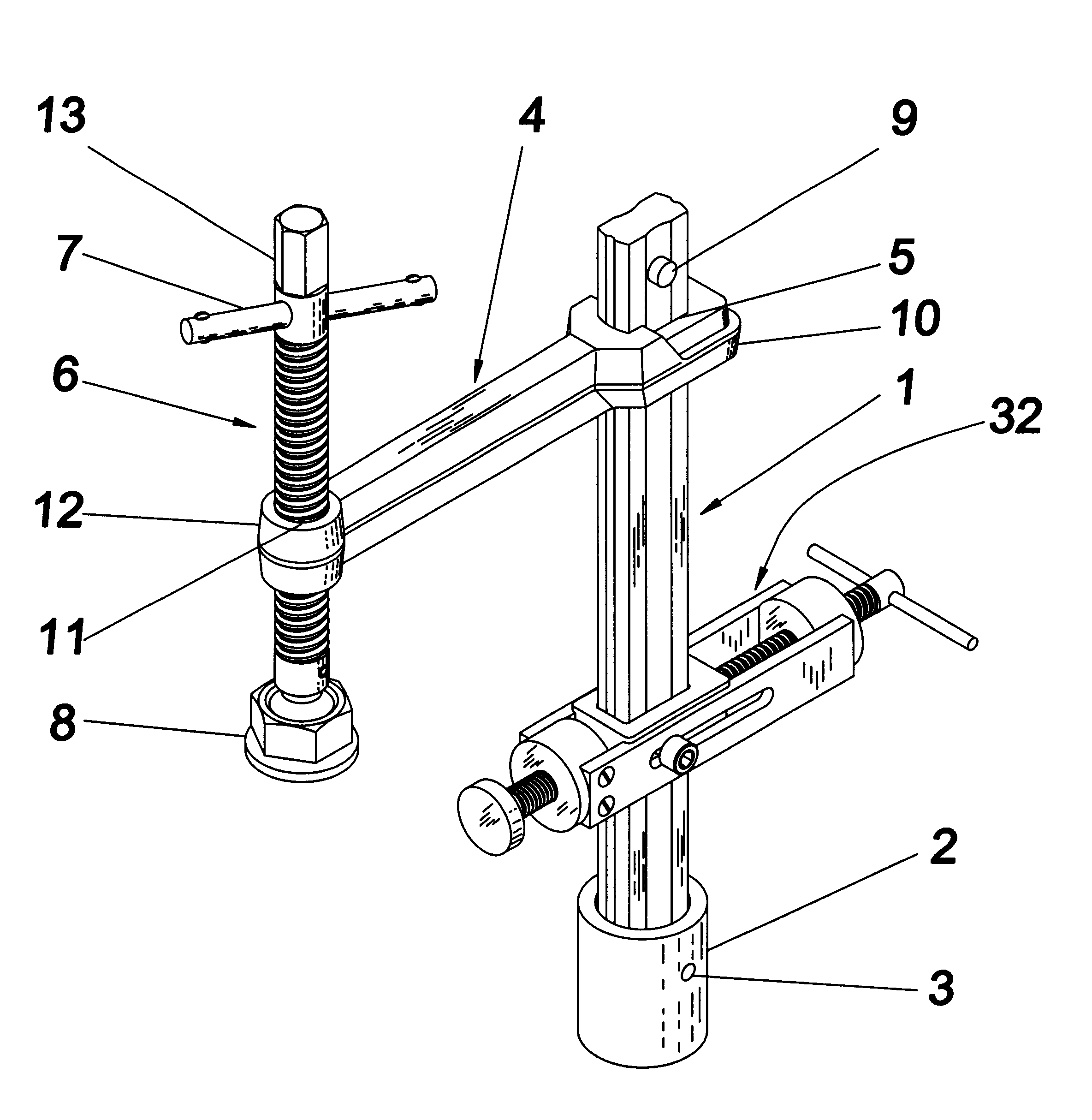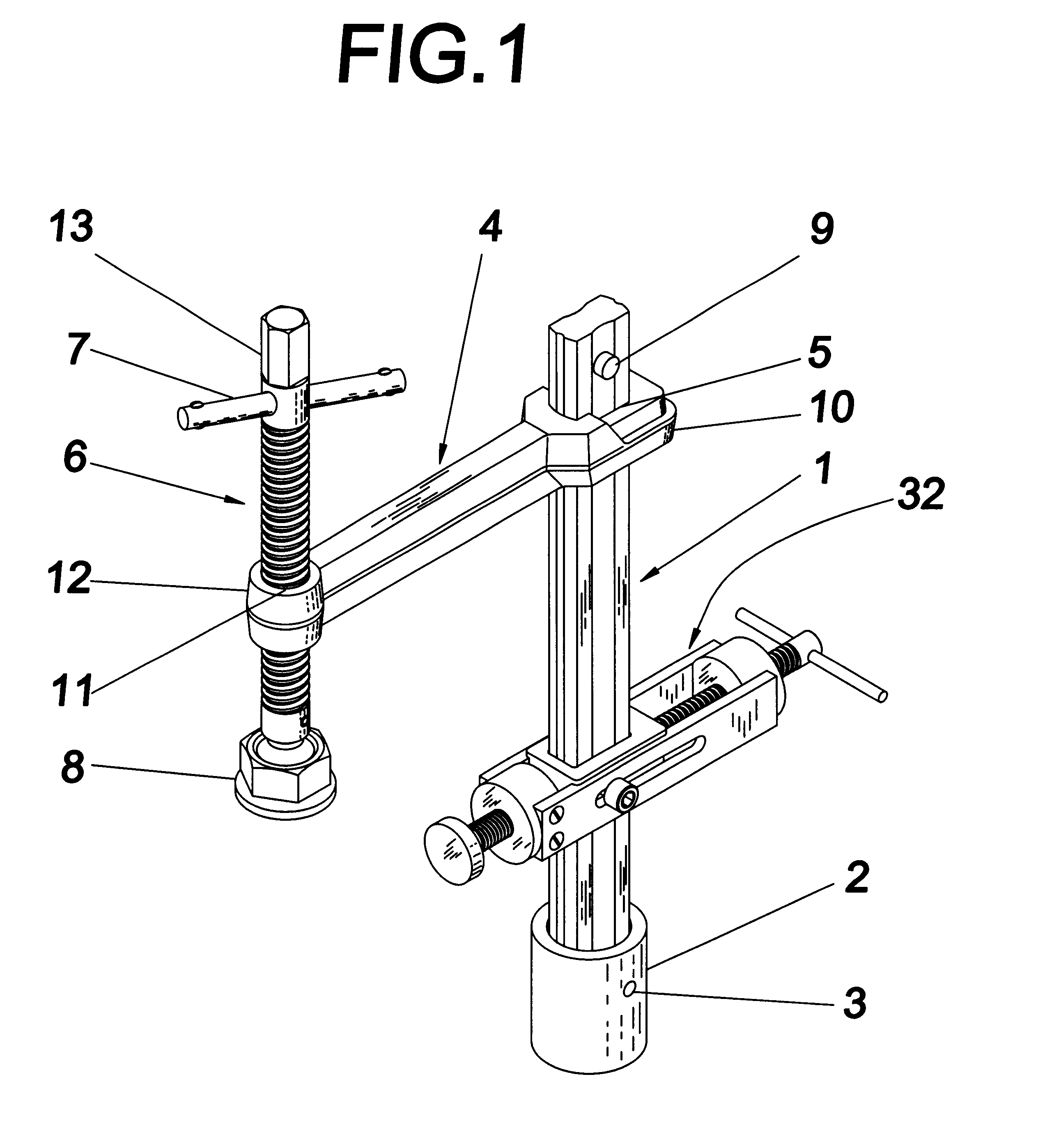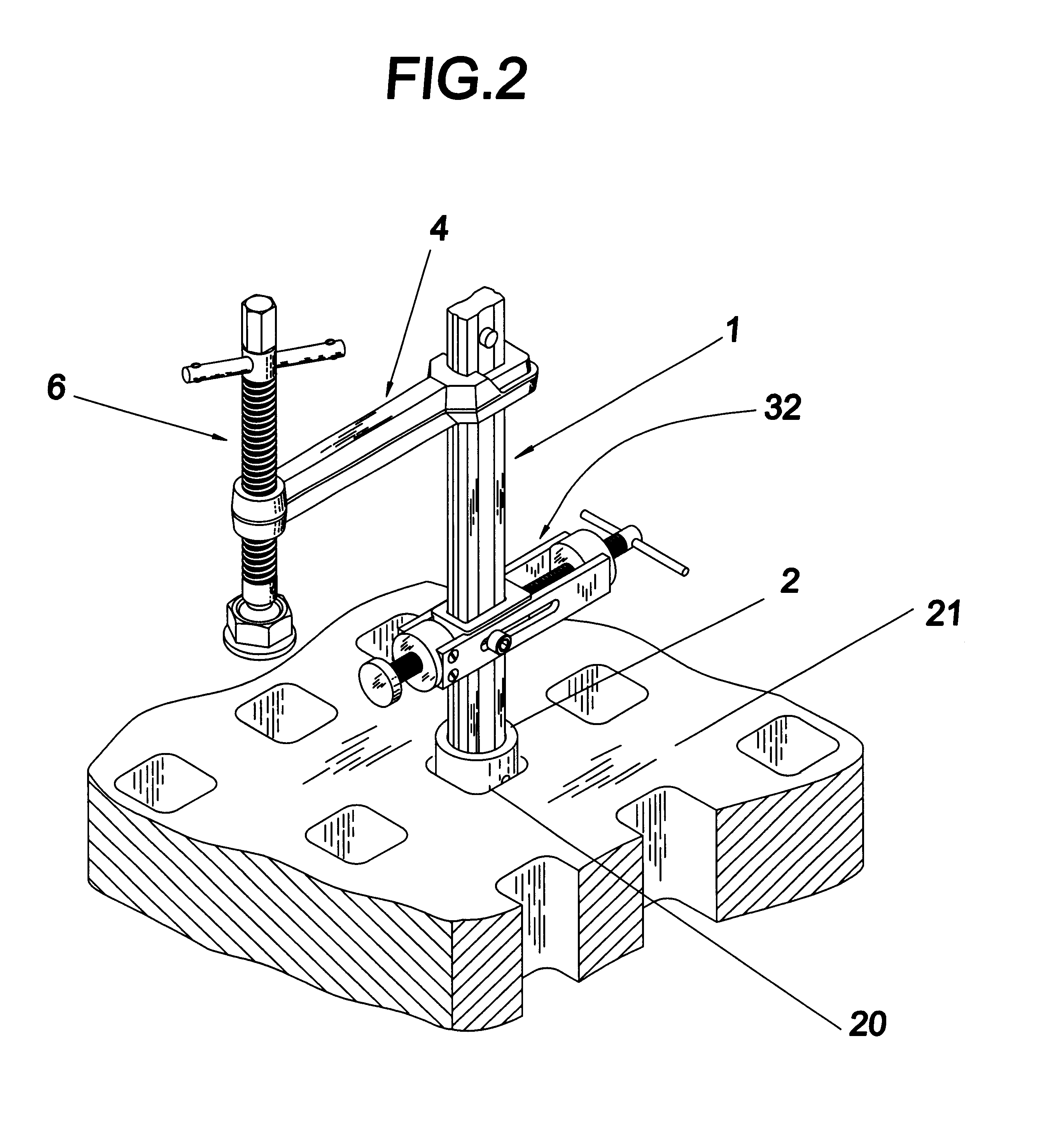Inserta clamp
a clamping device and inserting technology, applied in the direction of positioning apparatus, metal-working machine components, manufacturing tools, etc., can solve the problems of time-consuming and inconvenient way to get the job done, out of the reach of the clamping arm and the clamping pad, and inconvenient to do, so as to expand the functionality and flexibility of the clamping device. , the effect of easy removal
- Summary
- Abstract
- Description
- Claims
- Application Information
AI Technical Summary
Benefits of technology
Problems solved by technology
Method used
Image
Examples
Embodiment Construction
[0016]With the help of the drawings and the detail description below, the features of the present invention will be apparent and fully understandable.
[0017]Referring to FIG. 1, the present invention, a multi-function clamp, comprises a straight shank 1, a short cylindrical sleeve 2 attached and fixed to the lower end of shank 1 by taper pin 3, and a movable arm 4 with one end slid over the top end of shank 1 through rectangular hole 5, and the other end fitted with a threaded rod 6, turning handle 7, and the clamping pad 8. The straight shank 1 acts as the fixed arm of a conventional clamp. At the upper end of shank 1, a spring loaded quick release button 9 is equipped to prevent the falling off of the movable arm 4 and other attachments from shank 1, but at the same time it allows quick and easy insertion of these items onto shank 1. Movable arm 4 is a metal bar with a rectangular hole 5 at one end 10 and a cylindrical threaded hole 11 at the other end 12. The upper end of shank 1 ...
PUM
| Property | Measurement | Unit |
|---|---|---|
| flexibility | aaaaa | aaaaa |
| angle | aaaaa | aaaaa |
| diameter | aaaaa | aaaaa |
Abstract
Description
Claims
Application Information
 Login to View More
Login to View More - R&D
- Intellectual Property
- Life Sciences
- Materials
- Tech Scout
- Unparalleled Data Quality
- Higher Quality Content
- 60% Fewer Hallucinations
Browse by: Latest US Patents, China's latest patents, Technical Efficacy Thesaurus, Application Domain, Technology Topic, Popular Technical Reports.
© 2025 PatSnap. All rights reserved.Legal|Privacy policy|Modern Slavery Act Transparency Statement|Sitemap|About US| Contact US: help@patsnap.com



